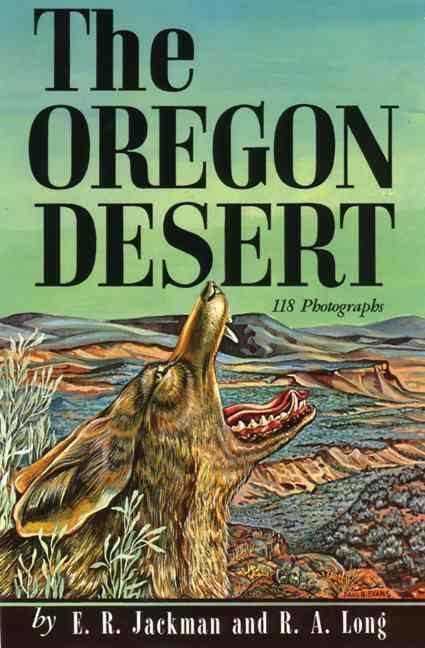9 /10 1 Votes9
5/5 Barnes & Noble Pages 407 LC Class 64-15389 Genre Non-fiction | 4.1/5 Goodreads Language English Media type Printed book ISBN 978-0870044342 Originally published 1964 Page count 407 Country United States of America | |||||||||||||||||||||||||||||||||
 | ||||||||||||||||||||||||||||||||||
The Oregon Desert is a non-fiction book about the high desert region of eastern Oregon. It highlights both the people and natural history of Oregon's high desert country using serious science, first-hand narrative history, and humorous anecdotal stories. It was written by E. R. Jackman and R. A. Long. The book was first published in 1964 and has never been out of print since its initial release.
Contents
Authors
Edwin Russell (E.R.) Jackman was an American agricultural expert from Oregon. He worked for Oregon State University as a rural extension agent and a farm crop specialist from 1929 until 1959. In this capacity, he advised local farmers and ranchers on modern agricultural techniques, land use, and conservation practices. His professional papers and photograph collection are in the Oregon State University archives. This includes his original notes, publication draft, and correspondence related to The Oregon Desert book.
R. A. (Reub) Long was a rancher and local historian from Fort Rock in south-central Oregon. He was widely known as a cowboy philosopher and witty story teller. He was also a long-time member of Oregon's State Board of Agriculture and donated property to the State of Oregon to create Fort Rock State Natural Area. A generation after his death, Long is still one of Oregon's best-known story tellers. This is due in part to the success of The Oregon Desert.
Jackman and Long began working together on conservation projects in the 1940s. This was the beginning of a lifelong friendship. In 1964, the two men got together to write The Oregon Desert, a book about the natural history and people of Oregon's high desert. According to the Caxton Press, "Reub Long is a cowboy who thinks like a scientist and E. R. Jackman is a scientist who thinks like a cowboy. Together they produced a book about a unique region of the American West and its inhabitants, filled with history, lore, and humor."
Synopsis
The Oregon Desert highlights the people, places, plants, and animals of Oregon's high desert. Jackman contributed scholarly chapters on geology, geography, flora, fauna, and the life of Native Americans in the high desert. Long added first-hand narratives about his life on the high desert using humorous anecdotal stories. According to Oregon Public Broadcasting, the book "successfully blended natural science with cowboy humor and scholarly prose with casual meanderings. It is a celebration of rural Western storytelling."
Chapters
The Oregon Desert has 407 pages with 118 photographs and illustrations. The book is divided into 23 chapters with nine short appendices along with the Index at the end.
Jackman was the book's primary writer. Long was a story teller so the chapters attributed to him were dictated to Jackman, who then prepared the entire volume for publication.
The book's appendices are very eclectic. They provide additional information on Spanish words used in the text, Oregon's horse population over time, the area where Reub Long caught wild horses, horse buyer's jargon, cattle brands, how the word "coyote" is used, Oregon's basic life zones, bobcat food, and high desert ghost towns.
Reviews
From its first release in 1964, The Oregon Desert has received excellent reviews from numerous sources. On 7 October 1964, the Eugene Register-Guard newspaper said:
To commemorate Oregon's sesquicentennial in 2009, the Oregon State Library recommended 150 Oregon-related books including The Oregon Desert. According to the Oregon State Library, this book is "a classic account of the places, events, animals and people in the High Desert region."
In highlighting The Oregon Desert in its section on Oregon authors and books, the Oregon Blue Book quoted from Google Books as follows:
Publication
The Oregon Desert is published by Caxton Press of Caldwell, Idaho. The book was first published in 1964. The book has never been out of print since its first edition in 1964. As of 2003, the book is in its fourteenth printing. Here are the publication dates for each printing from 1964 to the current edition which was published in 2003.
The University of Nebraska Press distributes the 2003 edition for the Caxton Press.
